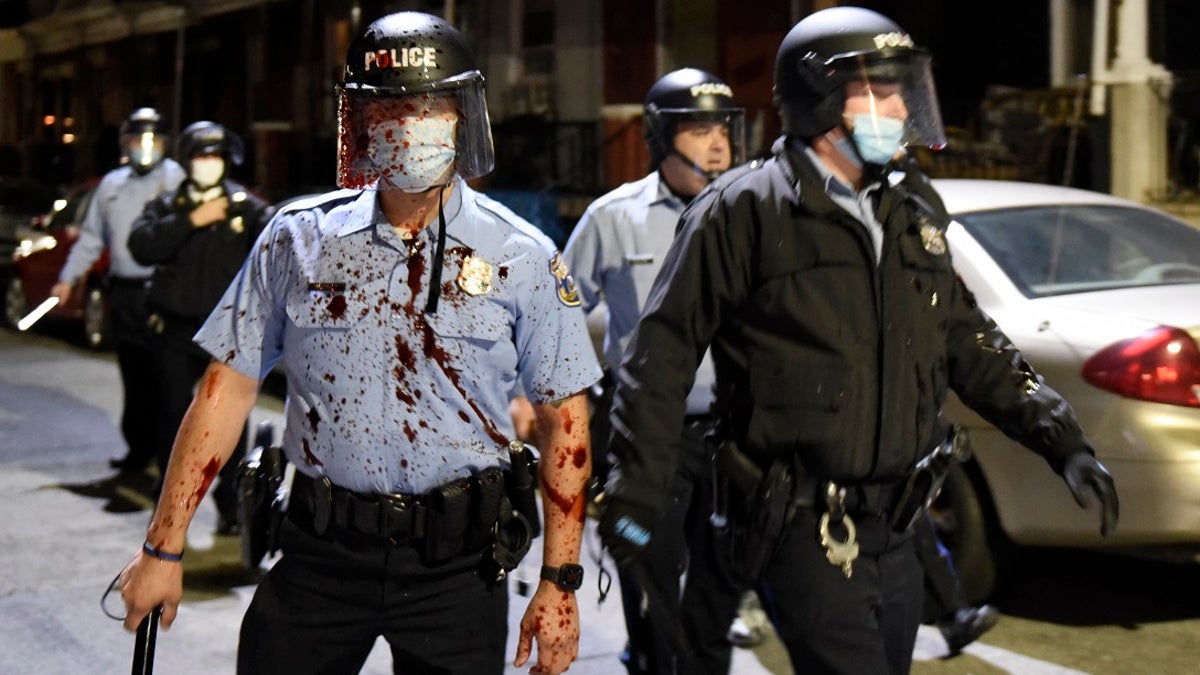Seattle to cut police funding as homicides spike
Seattle radio host Jason Rantz provides analysis on ‘Fox & Friends.’
The homicide rate in major U.S. cities jumped by an average of 34% in September and October compared to the same period in 2019, new data shows.
While significantly higher than 2019 homicide rates, the increase in the fall is less than the nearly 42% jump in homicides cities recorded during the summer between June and August compared to the same months in 2019, according to regularly updated data from the nonpartisan National Commission on COVID-19 and Criminal Justice.
The findings represent the most "sizeable increase in homicide" University of Missouri-St. Louis Professor Emeritus Richard Rosenfeld said he's seen in at least five years since the last wave of protests related to police violence took place throughout the U.S., but COVID-19 has most likely made violence worse.
"We've seen some reduction between the spike in homicide and gun assaults that occured in the middle of the summer and what we've seen in the fall," Rosenfeld, a former president of the American Society of Criminology who led the study, said. "I think we'll see less violence than we're currently seeing in the coming months, but I don't know if that trend is a temporary fluctuation."

Police maintain a perimeter outside a crime scene, Tuesday, Nov. 24, 2020, in the Queens borough of New York. (AP Photo/John Minchillo)
There were 610 more homicides in 21 cities including Los Angeles, Atlanta, Chicago, Detroit and Philadelphia over the summer and fall of 2020 compared to the same time last year. Year-to-date, the homicide rate is 29% higher than in 2019.
CHICAGO POLICE TRYING TO COMBAT VIOLENCE LIMITED BY POLITICS-DRIVEN POLICY: FORMER CHIEF
Rosenfeld attributes the spikes in violent crime that have continued into the fall to police misconduct that took place earlier in the summer, beginning with George Floyd's May 25 death.
"Even if protest activity itself has diminished over time ... we think it's important for cities and police departments to take reform very seriously," he said. "That doesn't mean defunding police in the first instance."

Los Angeles, CA, Thursday, September 24, 2020 - People protest the Kentucky grand jury decision in the case of Breonna Taylors death by Louisville police. (Robert Gauthier/ Los Angeles Times via Getty Images)
If police departments and communities -- especially disadvantaged communities of color -- don't make a significant effort to improve relationships, the country "will see another increase in violent crime," he said, especially if another instance of a law enforcement officer harming a person of color goes viral.
"That has to be priority No. 1," Rosenfeld said of amending relationships between police and communities.
PORTLAND HAS WORST STOLEN-CAR RATE PER CAPITA IN US, STUDY FINDS
Protesters in major cities and some lawmakers made calls to "defund" and even "abolish" police departments after Floyd's death. Some cities like Los Angeles and New York City will be implementing new police department budget cuts in 2021, in part due to COVID-19 spending, which will likely result in staffing and procedural changes that could impact crime.
Rosenfeld said, ideally, budget crunches will force police departments to focus their efforts and transfer some responsibilities like drug overdoses and calls regarding the homeless to other professionals.
MINNEAPOLIS TEEN WHO RECORDED VIRAL GEORGE FLOYD VIDEO TO RECEIVE COURAGE AWARD
Major cities also saw spikes in aggravated assault and gun assault increased by 15% and 16%, respectively, compared to the same time last year, the NCCCJ found.

A Philadelphia police officer is covered with an unidentified red substance during a confrontation with protesters, Tuesday, Oct. 27, 2020, in Philadelphia. (AP Photo/Michael Perez)
But homicide, aggravated assault and gun assault rates have decreased since reaching record highs in May and June amid civil unrest in cities across the U.S. following George Floyd's death. Burglary rates have also decreased since a temporary spike in May when violent protests were happening.
There has also been a spike in criminal activity against police officers in 2020. So far this year, 283 law enforcement officers have been shot -- 44 of whom were killed, according to the National Fraternal Order of Police. That number represents a 7% increase in police shootings compared to 2019 and a 29% increase compared to 2018.
CLICK HERE TO GET THE FOX NEWS APP
More than 2,000 law enforcement officers were injured in the first weeks of protests over the summer, according to the Major Cities Chiefs Association, a professional association comprised of local law enforcement heads from the 69 largest police agencies in the United States and nine in Canada.
During that period, there were 8,700 protests nationwide; 574 were declared riots with violence and other criminal acts. The violence was limited to 7% of protests, the report said.
Fox News' Louis Casiano contributed to this report.






